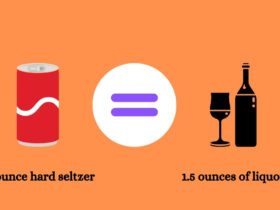When the clock strikes midnight on New Year’s Eve, millions of people across the globe reach for more than just champagne. They reach for specific foods believed to bring good luck, prosperity, and happiness in the year ahead. While cultures may differ in their traditions, the idea that what you eat on January 1st sets the tone for the entire year is surprisingly widespread.
So, what are the 7 lucky New Year’s food traditions that people swear by? Here’s a flavorful tour around the world to find out. You might even want to borrow a few of these tasty superstitions for your next celebration.
1. Black-Eyed Peas – Prosperity in the American South
Why it’s lucky: In the Southern United States, black-eyed peas are a must on New Year’s Day. This humble legume has been linked to prosperity and good fortune since the Civil War era. Eating them on January 1st is believed to attract wealth and luck.
Cultural story: One common tradition is Hoppin’ John—a dish made with black-eyed peas, rice, and pork. It’s often served with collard greens (symbolizing money) and cornbread (representing gold). The peas themselves resemble coins, making them a culinary metaphor for financial abundance.
Extra tip: Want to increase your luck? Eat exactly 365 black-eyed peas—one for every day of the year.
2. Greens – A Symbol of Folding Money
Why it’s lucky: Leafy greens such as collards, kale, cabbage, and spinach are associated with paper currency due to their green color and folded appearance. The more greens you eat, the more wealth you may attract—or so the tradition goes.
Where it’s popular: Greens are especially important in the American South and parts of Europe. In Germany, for example, cooked cabbage or sauerkraut is served with pork to ring in the new year.
Scientific bonus: Beyond superstition, greens are high in fiber and loaded with antioxidants—so your body will thank you, too.
3. Lentils – Wealth and Growth in Italy and Brazil
Why it’s lucky: Lentils are small, round, and coin-like, which makes them a symbol of money and financial growth. In Italy, it’s customary to eat a hearty dish of lentils (often with sausage) after midnight on New Year’s Eve. Brazilians follow a similar practice, pairing lentils with rice.
Interesting detail: According to Italian tradition, the more lentils you eat, the richer your year will be. Many people prepare a dish called Cotechino con Lenticchie—a slow-cooked pork sausage with lentils.
Global reach: This tradition has spread far beyond Italy. Even in the U.S., people from Italian and Brazilian backgrounds keep this custom alive.
4. Pomegranate – Fertility and Abundance in Greece and the Middle East
Why it’s lucky: Pomegranates are ancient symbols of fertility, abundance, and renewal. With their many seeds, they represent the hope for a fruitful year ahead—literally and figuratively.
The tradition: In Greece, it’s customary to smash a pomegranate on the ground at midnight. The more seeds that spill out, the greater your luck. In Iran and Turkey, pomegranates are eaten for their symbolic value.
Health fact: Pomegranates are rich in antioxidants and vitamin C, making them a nutritious way to start the year.
5. Fish – Forward Motion and Prosperity in Asia and Europe
Why it’s lucky: Fish swim forward—not backward. That’s the key reason they’re seen as a lucky food for New Year’s. In countries like China, Japan, and Scandinavian nations, fish represents progress, good fortune, and abundance.
Traditions vary: In China, eating a whole fish (usually steamed) is important during Lunar New Year, as the word for fish (yú) sounds like the word for surplus. In Germany and Poland, pickled herring is a traditional midnight snack believed to bring luck.
Word of advice: For full symbolic effect, the fish should be served whole—with head and tail—so your year starts and ends with success.
6. Noodles – Long Life in China and Japan
Why it’s lucky: In many Asian cultures, long noodles symbolize longevity. The tradition is particularly popular during Lunar New Year but also practiced in Japanese Toshikoshi Soba, a buckwheat noodle dish eaten on December 31st.
The key rule: Don’t cut the noodles. Slurping them whole is considered good luck, while breaking them may symbolically shorten your life.
Pro tip: Pair the noodles with stir-fried vegetables or fish for a wholesome, luck-filled start to the year.
7. Round Fruits – Wholeness and Wealth in the Philippines and Spain
Why it’s lucky: In the Philippines, people gather 12 round fruits (like grapes, oranges, and apples) to represent the 12 months of the year. The round shape signifies coins and continuous wealth.
A fun twist: In Spain, there’s the tradition of eating 12 grapes at the stroke of midnight—one for each chime of the clock. If you manage to eat them all in sync, it’s said you’ll enjoy a year of luck.
Try it yourself: Choose seedless grapes to make this tradition a little easier (and safer) to enjoy!
Why Do These Foods Matter?
Food traditions are more than superstition—they’re a way to connect with culture, family, and hope. Whether you’re savoring a bowl of lentils in Rome or nibbling grapes in Madrid, the ritual itself brings meaning to the turning of the year. These traditions serve as a form of edible optimism—a way to eat your hopes aloud and share them with others at the table.
Many of these practices also offer health benefits, from the fiber in legumes to the vitamins in greens and fruits. Even if you’re skeptical about luck, your body will benefit from a nutritious start to the year.
Final Thoughts
As someone who grew up with a mix of New Year’s customs, I love seeing how food can be both symbolic and comforting. Every January 1st, my family starts the day with black-eyed peas and greens, then we blend in new traditions we’ve picked up over the years—like eating grapes or experimenting with soba noodles. It’s a small way to bring the world to our table while setting hopeful intentions.
So, which tradition will you try this New Year?







Leave a Reply